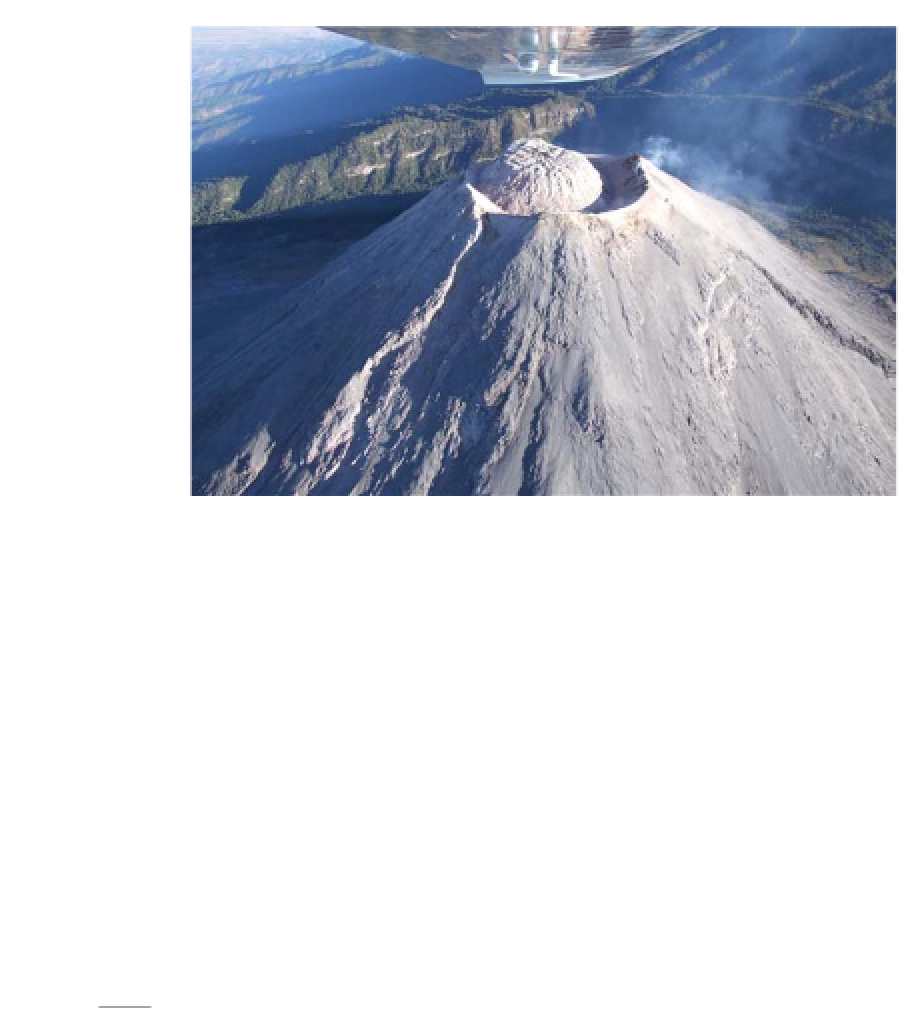Geology Reference
In-Depth Information
Figure 4.14
Photo of dome from Colima, Mexico (2009).
emphasised that pillows may form in any depth of water below a few metres,
and even in mud and in melt water below a glacier. They are formed when
lava is chilled rapidly by water: a chilled rind forms on the surface which is
sufficiently flexible to move with the flow which remains molten inside. But
as lava pressure increases, the rind breaks, causing formation of a propagating
bulbous or tubular lobe. Such pillows vary from a few centimetres to several
metres in their greatest dimension. The pillows have thin skins composed of
basaltic glass,
tachylite
(reflecting rapid chilling of lava entering sea water),
which in some cases has been altered by oxidation and absorption of water
into a yellowish-brown waxy-looking substance, termed
palagonite
, and then to
low-grade metamorphic minerals (for example, zeolite and chlorite). Palagonite
may form subaerially or below water. The pillows are sometimes connected by
slender necks and have tops that are usually convex upward, whereas the under-
surfaces may be flattish, concave upward or project downwards into interstices
between the underlying pillows (Figure 4.17a). These characteristics may be
used to infer the way-up of the volcanic pile.
The interstices between the pillows are often filled with fragments of bro-
ken glassy lava skins, cherts, limestone or shale, which when compacted, are
lithified and later converted to metamorphic minerals. Many pillows have a
radiating columnar structure and may show concentric zonation of vesicular
zones, produced as volcanic gases were episodically exsolved within the core.
















